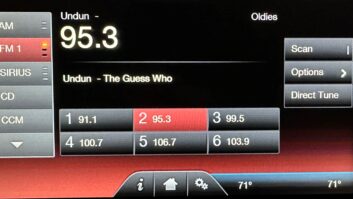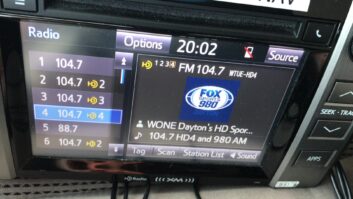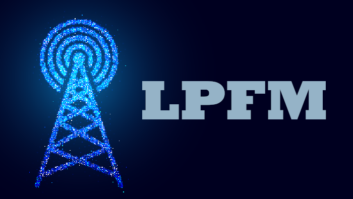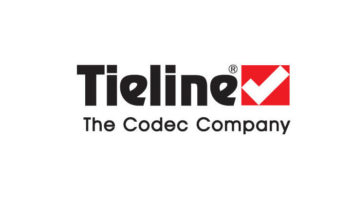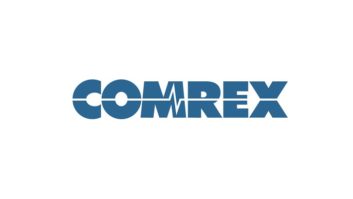Putting it all together
Nov 1, 2007 12:00 PM, By Chriss Scherer, editor
It’s no secret that everyone feels pressed for time. Workloads are increasing while staffs continue to be cut. We are asked to do more, but we’re not always sure how to get it all done and keep track of the steps along the way. The Radio magazine Annual Salary Survey always includes write-in comments that deal with the heavy workload and lack of sufficient time. The good news is that there could be some assistance already available.
The trend in smaller staffs with higher workloads is not likely to change any time soon. While an extra person would likely help the workload, there are some tricks and even some software that might help overall.
Modern technology
One fortunate circumstance is that equipment reliability continues to improve. Much of the routine and time-consuming alignment and tweaking isn’t a part of regular maintenance like it once was. This is not to say that equipment does not need attention; it just requires a different kind of attention.
Seven Tips to Better Time Management
While software tools can help track details and set plans for recurring tasks, the simplest way to maximize productivity is to effectively use your time. There are several established time management techniques that can be reference. A common one is ABC analysis where tasks are prioritized into groups of A, B and C, for high, medium and low priority. Even then, understanding your own schedule can be applied to make the most effective use of time. If you have 15 minutes to spare, complete a 15-minute project. Further still, divide a major project into smaller elements so each step can be accomplished in smaller increments. After investigating several references for time management, I found these ideas that were common in all of them, and they are a good baseline for maximizing time.
- Examine old habits and search for ways to change or eliminate them.
- Use down time effectively: Review notes and task lists.
- Keep something handy to jot notes or ideas during the day. Review these notes later or during down time.
- At the end of the day, make a list of action items for the next day and prioritize them.
- Accomplish the most important tasks early in the day.
- Plan deadlines with a view of other projects and recurring projects.
- Think on paper when possible to make it easier to review and revise ideas.
Much equipment can operate in a mostly automated fashion. More devices now include some kind of IP connectivity so devices can be accessed and checked remotely. It seems that wireless devices like the Blackberry have become the modern remote control interface. If the device has a Web browser, it can probably access most of the equipment in a facility. This remote access doesn’t replace the required on-site maintenance, but it helps.
Because we can’t add more hours to the day, we need to find ways to make the most efficient use of the time we have. Keeping track of supplies, resources, maintenance schedules, personnel schedules and facility schedules are all part of the facility’s operation. Managing these functions is a part of overall productivity.
So what’s the best way to ensure everything receives the appropriate attention at the right time and place? By organizing schedules and establishing methods to track time and resources, more time can be spent on the tasks instead of on trying to juggle all the pieces.
Where do you start? A basic method to track maintenance records, process trouble reports and schedule studio time can be accomplished with common tools and programs that every business has. If something more comprehensive is needed, there are more sophisticated programs and applications as well.
The most basic of any system is just pencil and paper. I see many stations use various forms to request studio time, note equipment problems and submit requests for work orders. One advantage to this method is that a tangible item is created to begin the process. The disadvantage is that these papers will pile up, and the only way to prioritize and organize them is through manual intervention. Reminders must be made manually, and ongoing record-keeping can be difficult.
The information from the paper forms can be added to common office programs to better track all the information. There are many office software programs available, although the Microsoft Office package appears to be the most popular. Setting tasks and reminders in a time scheduler such as Outlook are a great way to keep track of everything. Outlook Tasks can also store deadlines, ongoing project status and other information.
Outlook or a similar program can also be set up to handle requests through a general e-mail box, such as [email protected]. Pair these with the tasks and appointments to arrange schedules.
Excel is another program that seems to be handy for storing much more than financial information. It is handy for simple database functions, and the data can be accessed for merge documents and searched easily to find specific information. If you need more powerful database functions, Access or File Maker is the next step up.
With all this electronic data storage, why use paper at all anymore? You can also create a page on the station’s Intranet for people to submit trouble reports. This can send an e-mail message to alert someone of the problem, and it can add an entry to the database system to track the project’s status.
As I was investigating some software, I was made aware of Twiki.org as one way to track projects and manage documentation. Twiki is a structured Wiki, which builds on the Wiki idea and adds database functions.
These home-brew methods can work in many applications, but like any do-it-yourself system, you could spend more time maintaining the system than working on the projects the system is tracking.
Packaged assistance
The next step in productivity is to use a provider’s software to manage the data and project status. There are countless packages available because this type of software is used in nearly every industry. Some of them are completely customizable to fit nearly any use, while some manufacturers focus on a specific industry to tailor the system to have the most common and relevant functions.
These software systems can be used to track, report and schedule resources, maintain an inventory of replacement parts, track and schedule studio time, track and manage personnel schedules, and inventory a facility’s assets (audio files and equipment).
The main advantage to these packages is that they are all-in-one. There is no need to write elements as they are needed or modify other programs to achieve the desired result. They also offer some kind of manufacturer support.

Scheduall has several modules to schedule equipment and facilities in addition to other facility resources.
Scheduall is one program that has been available to broadcasters for some time. Various modules can be used for specific tasks, such as scheduling studio time, arranging personnel shift schedules and managing a media library. These packages provide a comprehensive approach to nearly every aspect of a facility’s operation. They may also include task options already covered by other software packages, such as commercial inventory and sales reporting. In these cases, use the modules that apply to the facility.
Asset management is one task that can benefit from a concise and manageable database. Two available software packages are offered by IBM (Maximo) and BMC (Remedy). These go beyond basic equipment inventory lists to provide tracking of updates, maintenance and other routine equipment functions.
Radio Free Asia has been developing software utilities for its own use, which it then makes available to others through the open-source initiative. The group’s most recent effort is called DTP, a database manipulation and report generator designed to track equipment, computers, software and the staff the equipment is assigned to in remote broadcast field offices and the RFA headquarters. The program is a Visual Basic front end to a Microsoft Access database.

Radio Free Asia has developed DTP to track equipment and software inventory.
Engineering Resources is a package that came from one TV chief engineer’s approach to managing resources. It started as a roll-your-own approach, but it is now fully developed. He took the help desk concept and adapted it to fit his need at the station. Reports can be sent to anyone designated. Time-tracking organizes and tunes the regular tasks, and the Bulletin Board provides an easy way for operators to share information between shifts. The system will also log discrepancies. All this information can be used to generate work requests.
The next time you’re feeling pinched for time, try to step back and evaluate the situation. You can’t add more hours to the day (nor do you really want to). Determine how you can work smarter, not harder. It may be that you need to find a way to enhance your productivity by using some available tools.
Resource Guide
Scheduall
800-334-5083
scheduall.com
Maximo
877-945-6325
www.mro.com
BMC
877-945-6325
www.bmc.com
Radio Free Asia
www.techweb.rfa.org
Engineering Resources
573-886-2860
broadcastbuyersguide.com





